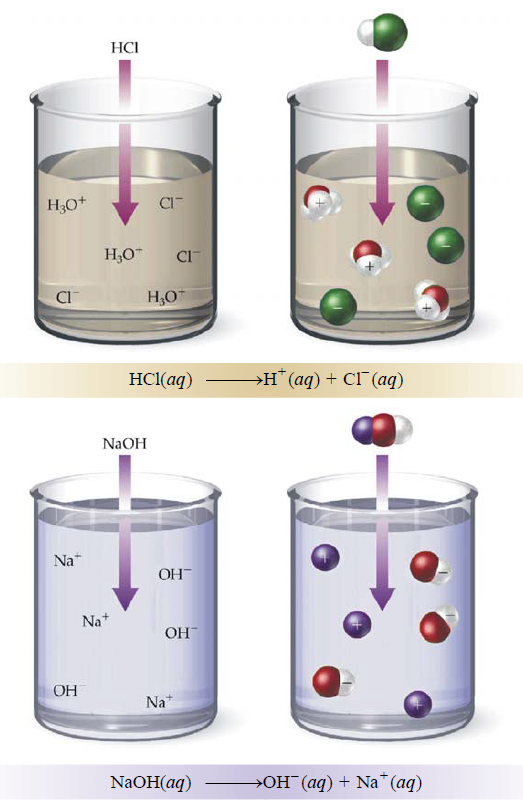BS-I SEMESTER-I MAJOR INORGANIC CHEMISTRY
acids and bases
Acids and bases are fundamental concepts in chemistry, influencing countless reactions in nature, industry, and biological systems. This chapter explores the definitions, classifications, strengths, measurement techniques, and applications of acids and bases, providing a thorough understanding of their behavior and significance.
1. Theories of Acids and Bases
Three major theories define acids and bases, each expanding our understanding:
1.1 Arrhenius Concept
Developed by Svante Arrhenius in 1884, this model states:
- Acids: Substances that increase H⁺ ion concentration in aqueous solutions (e.g., HCl → H⁺ + Cl⁻).
- Bases: Substances that increase OH⁻ ion concentration (e.g., NaOH → Na⁺ + OH⁻).
Limitations: This theory applies only to aqueous solutions and excludes bases that do not contain OH⁻, such as ammonia (NH₃).

Image from Essential of Physical Chemistry BS Bahl
1.2 Brønsted-Lowry Concept
Proposed in 1923, this broader definition states:
- Acids: Proton (H⁺) donors.
- Bases: Proton (H⁺) acceptors.
Example:
- HCl + H₂O → H₃O⁺ + Cl⁻ (HCl is an acid, H₂O is a base).
- NH₃ + H₂O → NH₄⁺ + OH⁻ (NH₃ is a base, H₂O is an acid).
Conjugate Acid-Base Pairs: Each acid has a corresponding base that forms after donating a proton, known as a conjugate base, and vice versa.
1.3 Lewis Concept
G.N. Lewis expanded the definition in 1938 by proposing:
- Lewis Acids: Electron-pair acceptors (e.g., BF₃, H⁺).
- Lewis Bases: Electron-pair donors (e.g., NH₃, OH⁻).
This broad theory includes reactions that do not involve protons, such as the reaction between BF₃ and NH₃.
Graphical Representation:
2. Strength of Acids and Bases
The strength of an acid or base depends on its ability to donate or accept protons, measured using dissociation constants:
2.1 Acid Strength (Ka)
The acid dissociation constant (Ka) quantifies an acid’s strength:
Examples:
- Strong Acids (Ka is large): HCl, H₂SO₄, HNO₃ (fully dissociate in water).
- Weak Acids (Ka is small): Acetic acid, carbonic acid (partially dissociate).
Graphical Representation:
2.2 Base Strength (Kb)
The base dissociation constant (Kb) measures a base’s strength:
Examples:
- Strong Bases (Kb is large): NaOH, KOH (fully dissociate in water).
- Weak Bases (Kb is small): Ammonia, aniline (partially dissociate).
Graphical Representation:
2.3 Relationship Between Ka and Kb
Ka and Kb are related through the ionization constant of water (Kw):
3. The pH Scale and Its Measurement
The pH scale (0–14) quantifies acidity or basicity:
- pH < 7: Acidic solution.
- pH = 7: Neutral (pure water).
- pH > 7: Basic solution.
Graphical Representation:
3.1 Measuring pH
- pH Indicators: Color-changing substances (e.g., litmus paper, phenolphthalein).
- pH Meters: Electronic devices that measure pH with high precision.
Examples:
- Strong Acid (0.01 M HCl): pH = -log(0.01) = 2.
- Strong Base (0.1 M NaOH): pOH = -log(0.1) = 1, pH = 14 – 1 = 13.
4. Buffer Solutions
Buffers resist pH changes when small amounts of acid or base are added, essential for biological and industrial applications.
4.1 Types of Buffers
- Acidic Buffers: Weak acid + its salt (e.g., CH₃COOH/CH₃COONa).
- Basic Buffers: Weak base + its salt (e.g., NH₄OH/NH₄Cl).
4.2 Buffer Action
Buffers maintain equilibrium by neutralizing added acids or bases. The Henderson-Hasselbalch equation calculates buffer pH:
Example:
- Acetic acid buffer (0.1 M CH₃COOH + 0.1 M CH₃COONa) maintains a pH of 4.74.